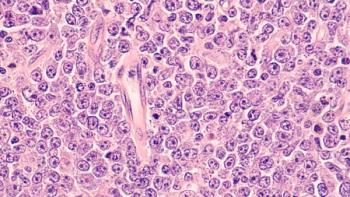
Improvements in Accessibility to Cancer Screenings Are Needed for Individuals With Disabilities

It is imperative that nurses and other health care professionals not only recognize the disparities in preventive screenings but become part of the solution. Early detection and cancer treatment must be accessible for those with disabilities, as it can help save lives.
According to the World Health Organization1 there are over 1 billion individuals living with a disability, representing approximately 15% of the world’s population. In the United States, the Center for Disease Control reports that 1 in 4 adults have some type of disability.2 Individuals with disabilities can be described as the largest minority group in the world; disability intersects across all demographics and rates of disability are increasing. Almost everyone will experience either a temporary or permanent disabling condition along their life span.
Cancer Screenings
Early cancer detection saves lives, whereas delayed detection results in late-stage diagnoses and higher mortality. Compared with women without disabilities, women with disabilities have lower rates of breast and cervical cancer screenings. According to a study based on the 2013 National Health Interview Survey, prevalence of Papanicolaou tests among women with disabilities between ages 21 and 65 years ranged from 66% to 80%, compared with women without disabilities (81%).3 Prevalence of mammograms among women with disabilities between ages 50 and 74 years was 61% to 68% compared with women without disabilities (73%). Women with mobility limitations had the lowest prevalence of receiving a Papanicolaou test, and women with cognitive impairment had the lowest prevalence for mammograms. Among adults with disabilities ages 50 and 75 years, screening for colorectal cancer ranged from 49% to 65% and was 57% among adults without disabilities. Individuals with disabilities experience disparities in cancer screenings and are at higher risk for late-stage diagnoses.
Barriers and Facilitators
A mixed methods systematic review investigated the barriers and facilitators of access to cancer services for people with physical disabilities.4 Five themes emerged from eighteen studies including: reasons for not engaging in preventive health care behaviors; interactions with health care providers (HCPs); external factors; accessibility of facilities; and positioning for procedures. Barriers to care included a lack of knowledge, personal beliefs systems, time constraints, and competing priorities. HCPs with poor attitudes, lack of knowledge and sensitivity, or failure to give needed referrals or information also were viewed as barriers. Receiving letters, post cards, or phone calls as reminders were viewed as facilitators as well as treating the person with a disability as an expert in their own care.
Women with disabilities were more likely to return for repeat mammograms when initially treated with sensitivity. External factors such as finances, transportation and accessible facilities could be improved with reliable transportation, and disabled parking spaces. Referrals to clinics with accessible equipment, ramps, and allotting additional time for appointments to allow for personal needs such as dressing or undressing were seen as facilitators. Regarding positioning, having a second technician to assist with safety, handrails, or being able to sit for a mammogram were suggested.
Resources for Evidenced-Based Care for People With Disabilities
To be part of the solution, nurses and other HCPs need the right tools to gain the competencies as well as the confidence to advocate for change for indivduals with disabilities.
It is never too early to introduce nursing competences specific to the care of people with disabilities within prelicensure curriculum. A set of 12 simple, yet flexible, competencies distinctly specific to disability culture and care were developed by this author and colleagues. These competences were divided into 4 dimensions—environment and care, communication, culture, and referral—and are adaptable to any nursing curricula (Table8).
The
Villanova University offers
To summarize, it is imperative that nurses and other HCPs not only recognize the disparities in preventive screenings, but also to be part of the solution. Early detection and cancer treatment must be accessible and will save lives.
References
- Disability and health. World Health Organization. November 24, 2021. Accessed October 26, 2022.
https://bit.ly/2LAcVGt - Disability and health overview. Centers for Disease Control and Prevention. Updated September 16, 2020. Accessed October 26, 2022.
https://bit.ly/3DzsmLr - Steele CB, Townsend JS, Courtney-Long EA, Young M. Prevalence of cancer screening among adults with disabilities, United States, 2013. Prev Chronic Dis. 2017;14:160312. doi:10.5888/pcd14.160312
- Edwards D J, Sakellariou D, Anstey S. Barriers to, and facilitators of, access to cancer services and experiences of cancer care for adults with a physical disability: a mixed methods systematic review. Disabil Health J. 2020;13(1):100844. doi:10.1016/j.dhjo.2019.100844
- Teaching and learning resources. Alliance for Disability in Health Care Education. Accessed October 26, 2022.
https://bit.ly/3FkldjI - Advancing care excellence for persons with disabilities. National League for Nursing. Accessed October 26, 2022.
https://bit.ly/3DdDdcv - Caring for people with disabilities: the nurse practitioner tool kit. Villanova University M. Louise Fitzpatrick College of Nursing. Accessed October 26, 2022.
https://bit.ly/3gLmQMJ - Kronk R, Colbert AM, Smeltzer SC, Blunt E. Development of prelicensure nursing competencies in caring for people with disabilities through Delphi methodology. Nurse Educ. 2020;45(3):E21-E25. doi:10.1097/NNE.0000000000000712
- Development of Prelicensure Nursing Competencies in Caring for People With Disabilities Through Delphi Methodology; Nurse Educator45(3):E21-E25, May/June 2020.


















































































